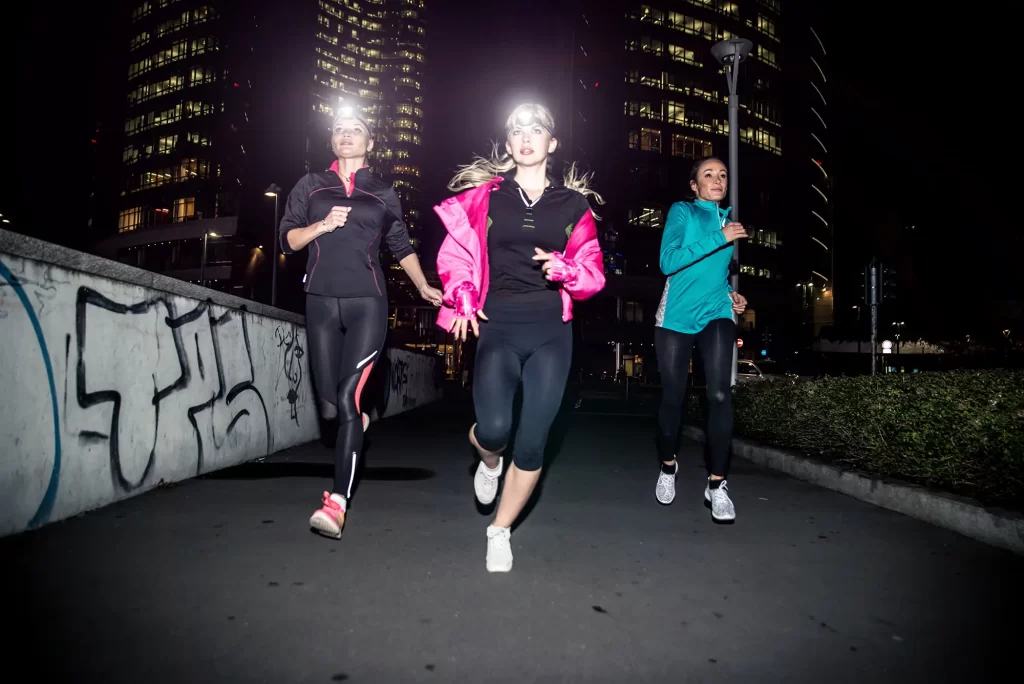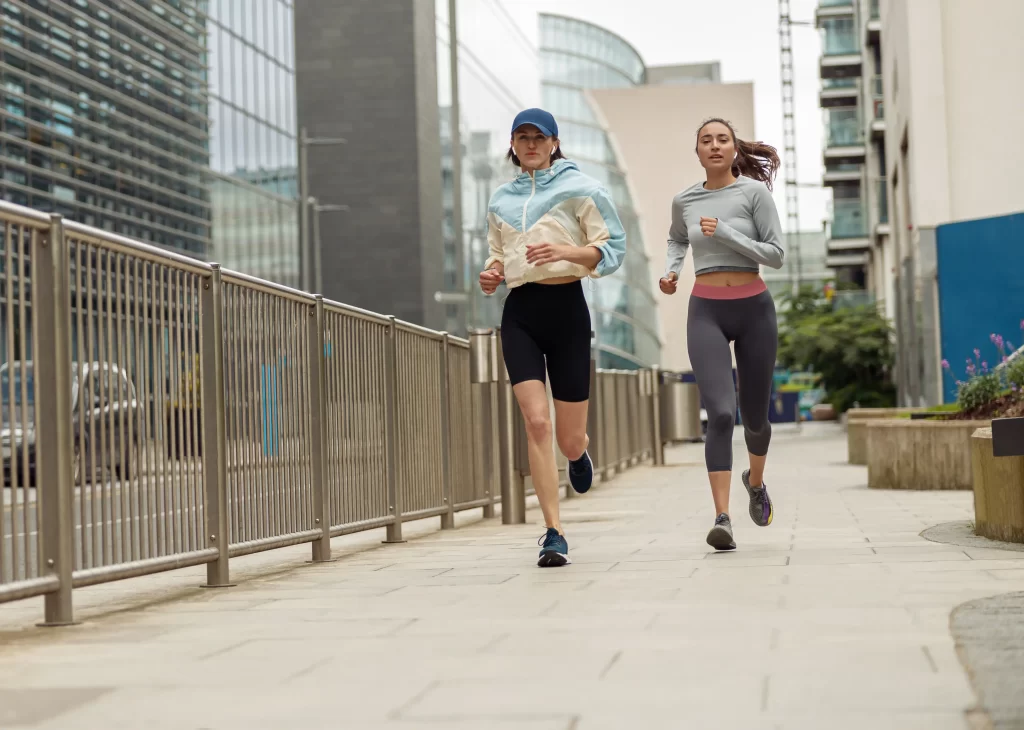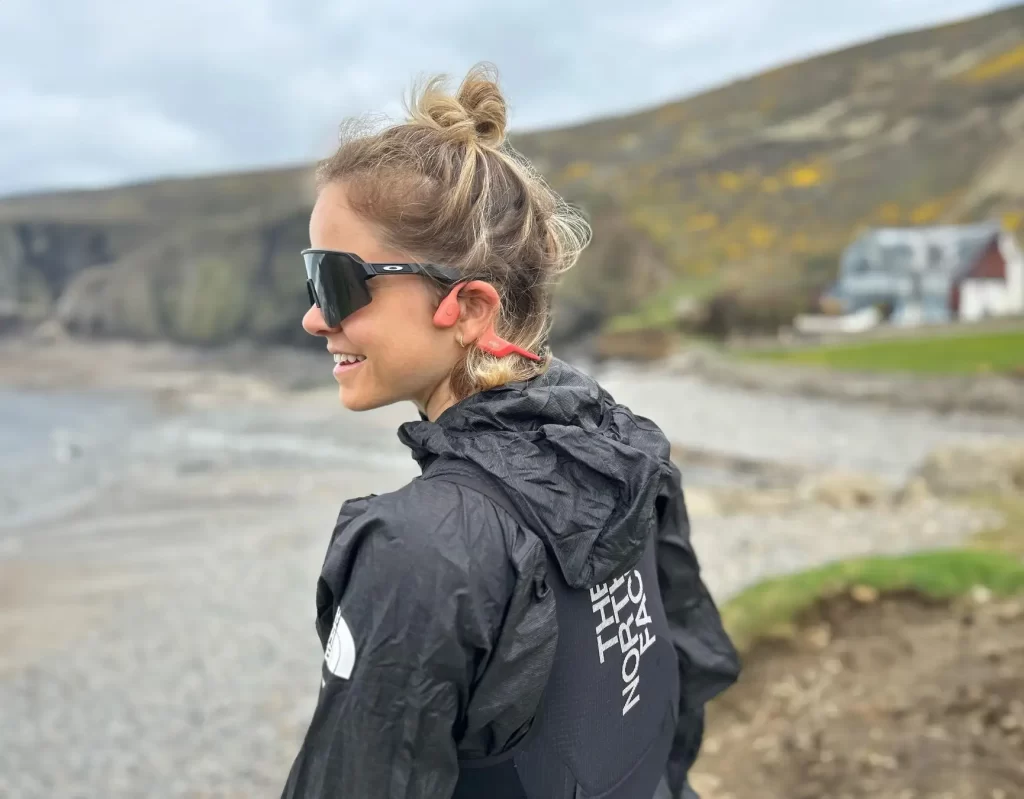
Running Safety Tips and Tricks for a Safe Run
Are you looking to run safely and protect yourself from potential danger? This guide has everything you need to know about running safety

Dean Davis
January 8, 2024


Running has always been more than just a workout for me; it’s a journey of self-discovery, a test of limits, and a way to connect with nature. But as exhilarating as it is, running also brings its share of risks. I remember reading a statistic that struck a chord: “Motorists who speed and fail to give runners a wide berth pose a significant risk to the safety of runners.” There were over 14,000 pedestrian injuries in road traffic accidents in 2020 and 355 fatalities. This figure was a wake-up call, emphasising that safety isn’t just an option but a necessity.
As a runner, I’ve experienced various terrains and conditions – the peaceful yet unpredictable trails, the busy urban streets, and the serene but challenging night runs. Each setting has unique hazards, from uneven paths in the woods to the city’s relentless traffic. The tranquil isolation of night runs, while meditative, can also heighten vulnerabilities.
Safety in running isn’t a one-size-fits-all approach. It demands adaptability and awareness. In the woods, I learned to be vigilant of roots and rocks, mindful of the wildlife, and respectful of nature’s unpredictability. On city streets, my senses are attuned to the rhythm of traffic, the signals, and the unwritten rules of urban running. Night running, a personal favorite, requires an extra layer of caution – being visible with reflective gear and choosing well-lit paths.
Through my running journey, I’ve realized that safety is as much about mental preparedness as it is about physical readiness. It’s about planning your route, understanding your environment, and being equipped for emergencies. It’s a commitment to return from each run not just fulfilled, but unharmed.
In this article, we’ll explore the multifaceted world of running safety. From pre-run preparations and tailored advice for different terrains to post-run practices, I’ll share insights and experiences, aiming to equip you with the knowledge for a safer, more enjoyable run. Whether you’re navigating the quiet trails, pacing through the bustling streets, or embracing the calm of the night, remember that your safety is paramount. Let’s dive into the world of running with caution as our trusted companion.

Table of Contents
Before lacing up my running shoes, I always take time for thorough preparation. This ritual has not just enhanced my running experience but has been crucial for my safety.
Checking the weather forecast is a step I integrate into my pre-run routine. Adapting my attire to the weather not only ensures comfort but also safety. For instance, on hot sunny days, I opt for breathable fabrics to prevent overheating, while on colder days, layering appropriately helps maintain body warmth.
Reflective gear is my go-to for low-light conditions. Whether it’s a reflective vest, bands, or even shoes with reflective elements, ensuring I’m visible to others, particularly motorists, is vital.
Comfortable footwear, tailored to the terrain, has been a game-changer for me. I choose shoes that provide adequate support and grip, which vary depending on whether I’m hitting the pavement, trails, or the track.
Carrying identification and a charged phone has become non-negotiable in my running kit. In unexpected situations, these items are crucial for safety and getting assistance.
Proper hydration and nutrition are the fuels that power my runs. I ensure to hydrate well before starting and carry a small water bottle during longer runs. For nutrition, a light snack like a banana or an energy bar, consumed about 30 minutes before the run, provides the necessary energy without overburdening my stomach.
These pre-run preparations, cultivated from years of running, form the foundation of a safe and enjoyable running experience. They’re not just routines; they’re safeguards that enable me to focus on the joy of running, knowing I’ve taken the necessary steps to ensure my safety.
As a runner, adapting to different terrains and environments is essential for a safe and enjoyable experience. Here’s a deep dive into how I tailor my safety practices for various running settings.

Obeying traffic signals and using crosswalks is a non-negotiable part of my road running routine. It helps in avoiding unnecessary risks.
At intersections or turning points, I always yield to vehicles, ensuring that I make eye contact with drivers to confirm my intentions.
When changing directions, I use hand signals to communicate my moves to drivers, enhancing mutual understanding and safety.
Choosing trails that match my skill level and fitness is important. I research trails for potential hazards and start with easier ones, gradually progressing to more challenging paths.
Informing someone about my planned trail and expected return time is a step I never overlook.
On trails, I remain focused and anticipate obstacles like roots, rocks, or uneven surfaces, adjusting my pace and stride accordingly.
In areas with wildlife, I carry bear spray and stay informed about the local wildlife, making noise to alert animals of my presence.
Reflective vests, jackets, or armbands are essential. I also use reflective ankle bands or shoe clips for extra visibility.
Choosing a headlamp with sufficient brightness is crucial. I carry extra batteries or a rechargeable headlamp for longer runs and adjust the beam to avoid blinding myself or others.
When running at night, especially on isolated trails, I prefer the company of a partner or a group. This not only enhances safety but also adds to the enjoyment.
Prioritising safety in different terrains has not only enhanced my running experiences but also ensured that I return from each run safe and sound, ready to lace up for the next adventure.
Running is not just a physical activity but a sensory experience requiring acute awareness. Here’s how I ensure my senses stay sharp and vigilant during every run:

The finish line isn’t the end; it’s the beginning of preparing for the next run. My post-run practices are as essential as the run itself, focusing on recovery, reflection, and planning. Here’s how I wind down wisely:
Incorporating these post-run practices ensures that every run is not just enjoyable but also a step towards a safer running future. It’s about creating a sustainable running journey, where safety and enjoyment go hand in hand, encouraging a lifetime of fulfilling and secure running experiences.
As we reach the end of our exploration into running safety, it’s crucial to underline the key takeaways that can transform our running experiences from mere physical exertions to mindful journeys of safety and enjoyment.
Safe running starts long before the first step. Choosing well-lit, familiar routes, informing someone about your plan, and being weather-wise are essential practices. Equip yourself with the right gear, ensuring you’re visible and comfortable, and don’t forget the importance of proper hydration and nutrition.
Each terrain presents unique challenges. On roads, be visible and vigilant, always mindful of traffic. Trails call for an awareness of natural obstacles and wildlife, demanding respect for nature’s unpredictability. Night runs require enhanced visibility measures and, if possible, the safety of numbers.
Maintaining vigilance during your run is vital. Whether it’s through mindful headphone use, trusting your intuition, or carrying personal safety tools, staying alert to your surroundings is non-negotiable.
Winding down wisely with proper cooldowns, body replenishment, and gear checks is as crucial as the run itself. Reflect on your safety practices and plan for improvements in future runs.
Finally, I invite you to be proactive in your approach to running safety. Don’t just read and forget; implement these strategies in your runs. Share your experiences, learn from others, and maybe even inspire someone new to running to adopt these safety habits.
Remember, running is not just about speed, distance, or endurance. It’s about creating experiences that are safe, enjoyable, and fulfilling. By prioritizing safety in every stride, we not only protect ourselves but also contribute to a safer running community. Here’s to many more miles of safe and enjoyable running!